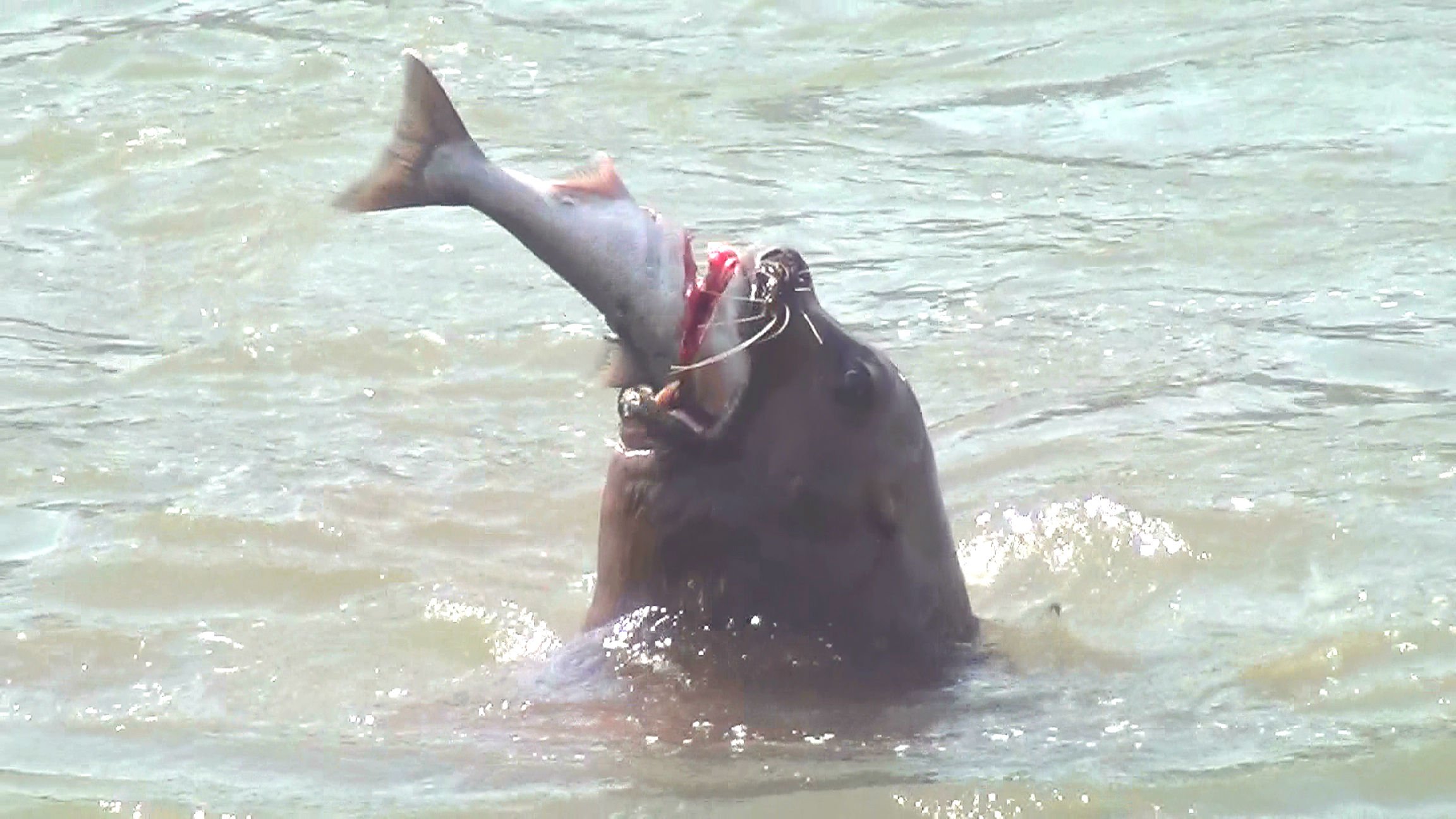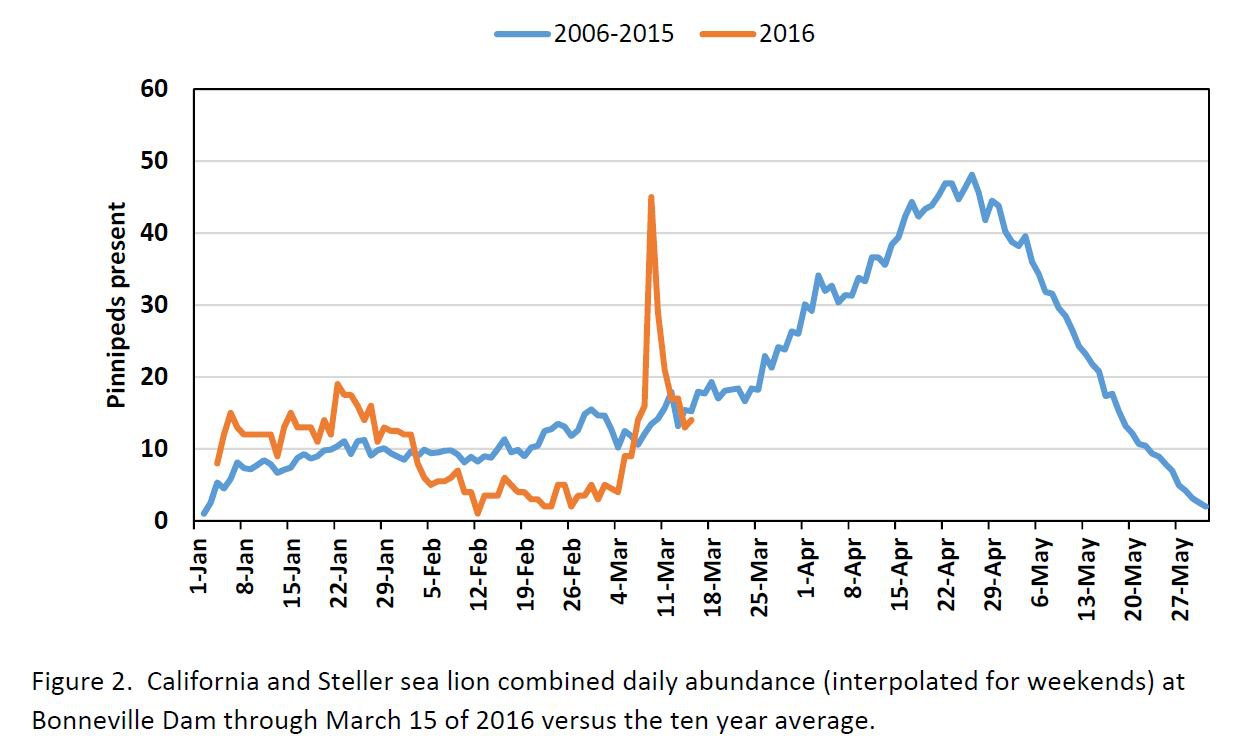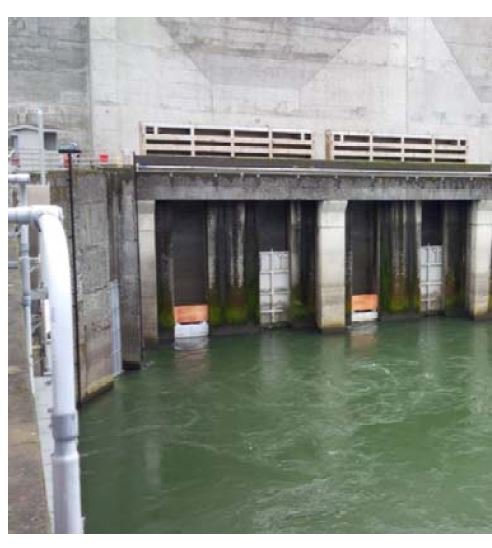They're back, and they're hungry
- March 23, 2016
- John Harrison

It’s spring, and the sea lions are back at Bonneville Dam.
In its first 2016 monthly status report on sea lion presence and predation on salmon, steelhead, and sturgeon at the base of the dam, the U.S. Army Corps of Engineers reports that so far, at least, neither the extent of predation nor the number of animals is too far out of the ordinary.
However, deterring sea lions to keep them away from migrating steelhead and spring Chinook salmon is an ongoing, ever-evolving effort, as shown at the entrances to the fish ladder at the base of the Second Powerhouse on the Washington side of the river. There, the Corps installed wood panels on top of the jail-bar-like “sea lion exclusion devises” to keep enterprising sea lions from climbing over the devices and into the fish ladder, where one was observed on March 14.

In its March 21 report, covering the period from January 1 through March 15, the Corps’ Fisheries Field Unit reports:
- Steller sea lions have been more abundant at the dam than California sea lions, reaching about 25 animals observed per day (the high was on March 9, with 34 Stellers and 11 California sea lions). Of the Stellers, 26 had had been observed at the dam in previous years.
- The first California sea lion was observed on February 26 this year. Their presence has been fewer than five per day, and most are small, young, and difficult to observe because of their constant motion and swift movements. Eight of the older Californias have been seen at the dam in past years.
- Predation on sturgeon by Steller sea lions has been lower so far this year than in past years, and most have been killed in front of the Second Powerhouse.
- Predation on steelhead and Chinook salmon is similar to previous years, so far, with more steelhead taken than salmon.
- Hazing of sea lions from boats and the dam began the second week of March and appears to be effective with Stellers and the younger Californias. However, when the hazers aren’t present, Stellers can be seen sleeping on Tower Island in the middle of the river.
In its summary report of predation in 2015, released this month, the Corps reported that sea lions consumed 10,859 salmon and steelhead at Bonneville Dam, an amount equal to about 4.3 percent of all adult salmon and steelhead counted there between January 1 and May 31. California sea lions consumed 8,324 and Steller sea lions consumed 2,535. Sea lions also consumed an estimated 44 white sturgeon, the lowest recorded since 2005 when Steller sea lions were first observed feeding on sturgeon, and also 24 percen of the winter steelhead passing the dam between January and March, according to the report.
The number of sea lions recorded at the dam last year – a minimum of 264 – was higher than in any year since monitoring began in 2002. The 2015 number was 59 percent greater than the previous high of 166 in 2010, the Corps reported.
Also in 2015, the Washington and Oregon fish and wildlife departments captured and removed 32 of the 94 California sea lions that were authorized for permanent removal under Section 120 of the Marine Mammal Protection Act.

Wooden panels atop the sea lion exclusion devices. Corps of Engineers photo.



